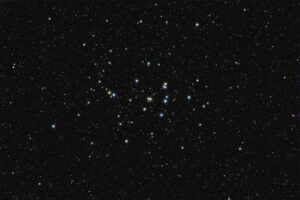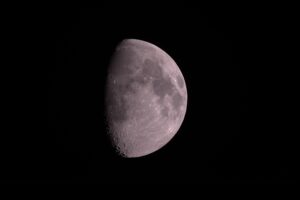Syracuse Astronomical Society Events
- April 17th – Board Meeting: Our Monthly Board Meeting occurs at 7:30PM. This will be a zoom only meeting. Members can check your email for a link.
- April 18th/April 19th – Public Observing Session: Join us for our first official public session of the year following our Mini Messier Marathon held in March. Bring your family to explore the marvels of the night sky and catch a glimpse of the Milky Way. We will feature an EAA presentation, and our main telescope will be available for viewing.
- April 25th/April 26th – Member Observing Session: Join us for a member observation session on the weekend of April 25th. Bring your telescopes and enjoy stargazing alongside fellow members.
- April 26th – Spring Clean Up: As we begin each observing season we take time to clean up our grounds after the long cold winter. This will include tasks such as cleaning the chartroom, trimming the grass, and cutting back the trees around the perimeter. Work begins at 9:00AM.
- April 26th – Used Telescope & Equipment Sale: If you are looking to buy or sell used telescope & telescope accessories join us after the spring clean up from 2-4PM at the observatory.
Special Astronomical Events
- Lyrid Meteor Shower: Meteors from this shower are expected to be visible between April 14th and April 30th, with the peak occurring on April 22nd. The radiant point is located in the constellation Lyra, which is how this shower derives its name. The Lyrid meteor shower originates from Comet C/1861 G1 Thatcher. During its peak on April 22nd, we can anticipate seeing around 20 meteors per hour.
- Full Pink Moon: April’s full moon on the 12th is called the “Pink Moon,” inspired by early spring’s vibrant colors, not the moon’s hue. This name comes from creeping phlox a North American wildflower that blooms in pink early in spring. Naming full moons is rooted in Native American traditions, where tribes named them based on important seasonal changes. The “Pink Moon” marked spring’s arrival, signaling new growth.
- First Quarter: April 4th
- Full Moon: April 12th
- Last Quarter: April 20th
- New Moon: April 27th
Constellations to Spot
- Leo the Lion: Recognizable by its “sickle” shape, look for the bright star Regulus, representing the lion’s heart.
- Virgo the Maiden: The second-largest constellation with Spica as its brightest star, found by following the Big Dipper’s handle, making an arc from Arcturus to Spica.
- Ursa Major (The Great Bear): Prominent in the northern sky, it contains the Big Dipper, a key navigation point.
Planets on Display
- Jupiter: Will be fading fast as it get’s closer to the sun each night in Taurus but will still be visible with a clear eastern horizon
- Mars: begins the month in Gemini and will transition to Cancer, creating a stunning contrast with the neighboring stars. Although it has passed its prime viewing time, this remains an excellent opportunity to observe it before it reaches opposition again in two years.
- Saturn: You need to be an early riser to see this, or stay up late. Saturn offers the most interesting view as it’s rings are edge on making them almost invisible to us. If you ever wondered what Saturn would look like without it’s rings now is the time to see it, though you’ll need binoculars or a telescope.
Objects to Look at through Binoculars or a Small Telescope
-

M44 The Beehive Cluster M44 – The Beehive Cluster (Praesepe): Nestled in the constellation Cancer, this bright open cluster is reminiscent of a swarm of bees it is around 610 light years from to Earth. This can also be seen with the naked eye in dark skies.
- M3- Globular Cluster: Residing in the constellation Canes Venatici, M3 is a remarkable globular cluster. It appears as a small fuzzy spot through binoculars, while a telescope unveils its dense star collection.
- M81 and M82 – (Bode’s Galaxy and the Cigar Galaxy): Situated in the constellation Ursa Major, this stunning galaxy pair includes M81, a spiral galaxy, and M82, an irregular, cigar-shaped galaxy.
- The Double Star – Cor Caroli: Located in the constellation Canes Venatici, this binary star system offers a delightful view. The two stars, distinct through a small telescope, provide a contrasting color display.
- The Leo Triplet (M65, M66, and NGC 3628): This captivating trio of galaxies in the constellation Leo is a favorite among amateur astronomers due to their close proximity to one another.
April 2025 is set to showcase an awe-inspiring celestial spectacle. Whether you’re a casual stargazer or a passionate astronomer, the night sky has something to captivate everyone. Embrace the beauty and marvel that the stars and planets will bring this month.

